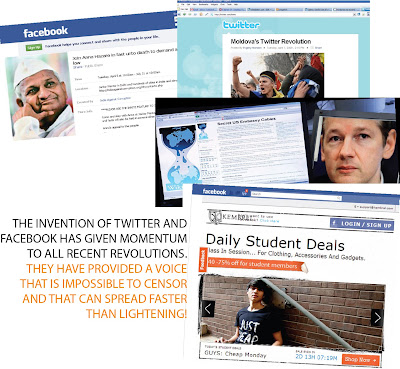NEVER NEVER NEVER GIVE UP
THEY NEVER GAVE UP
She was born into a family of jhum cultivators of Manipur. She helped her parents till the fields and looked after her siblings. Brought up in such a modest background, she never imagined that she would one day win a medal for her country at the Olympics. The woman I am talking about is Mary Kom, a true winner who, without any formal training and money, has won six gold medals at World Championships. This year, she made India proud by winning a bronze for the country. While better and more popular athletes crashed out, this woman put up a tough fight and achieved victory. Her story is the story of a woman who never gave up.
 |
| Prof. Rajita Chaudhuri |
IT TAKES COURAGE TO STAND UP
In life, things may not go as planned, but great minds have the ability to rise to the occasion and take up the challenge. As Washington Irving once said, “Little minds are tamed and subdued by misfortune, but great minds rise above them.” It’s these people who have achieved true greatness. John Milton lost his eyesight, but it did not deter him from writing Paradise Lost almost 16 years after losing his eyesight. Van Gogh sold only one painting during his lifetime, that too, to one of his sister’s friends for $50. Yet, he never gave up painting and completed 800 paintings without feeling dejected; and all the time totally believing in what he was doing. Persistence pays, and is the deciding factor between winners & losers.
The exhibitions of the ‘Impressionists’ artists were routinely rejected by the Paris Salon. They thought it was not art and refused to acknowledge it. The artists never gave up and continued their work. Today, there is hardly anyone who remembers the name ‘Paris Salon’, but anybody interested in art knows about the ‘Impressionist’ artists. In June 2008, the auction house Christie’s London sold its most expensive painting, that of Impressionist master Claude Monet, for more than 40 million pounds. Never ever in Europe had a painting been sold at an auction for such a price. The ‘Impressionist’ painters never let the judgment of Paris Salon pull them down. They never gave up on what they believed in till the world gave them their due.
He did not speak until he was four years old, and couldn’t read until he was seven. His parents thought he was ‘sub-normal’. He was expelled from school and his teachers described him as “mentally slow, unsociable and adrip forever in foolish dreams.” Those were these ‘foolish dreams’ of his that transformed the world. From opening a whole new world of ‘Quantum Physics’ to answering the question “Why is the sky blue?”, he changed the way people understood the world! Albert Einstein looked at things differently and saw what others could not see. Even the ‘God particle’ would not have been discovered had it not been for Einstein and the support he gave to our own Indian scientist Satyendra Bose.
This boy failed in sixth grade and he was defeated in every office he stood for. But he did not give up till at 62, he became the Prime Minister. His name was Winston Churchill.
These and many more such success stories have one thing in common; the people never succumbed to adversity and never lost focus. They relentlessly pursued their goals and believed in themselves even when the world gave up on them. These people had the courage to fight all odds.
IT TAKES COURAGE TO SIT DOWN
As Winston Churchill once said, “Courage is what it takes to stand up and speak, courage is also what it takes to sit down and listen”. If success comes with listening to your ‘inner voice’ and not letting other’s opinions overpower this voice, it also comes when you have the courage to listen to other people – especially those who don’t agree with you. Success also comes when you have the humility to accept you were wrong and change your course of action. The most difficult words to say are “I am sorry” and ‘I was wrong”. People who have the courage to use these words win in the long run.
 |
| Indian Boxer M. C. Mary Kom |
John Burroughs once said, “A man can fail many times, but he isn’t a failure until he begins to blame somebody else.” When you blame others, you learn to find an easy way out to justify your mistakes. This takes away the cutting edge from your fight, which is what makes true winners succeed in the long run.
 |
| Noted Painter Vincent Van Gogh |
There is no success without failure. The truly successful ones are those who have mastered the art of handling failure. They have the courage to accept their mistakes and sit down.
IT TAKES COURAGE TO STAND UP AGAIN
Everybody fails, but you become a ‘failure’ if you refuse to get up after a fall. There is a Japanese proverb that describes success in a simple line: “Fall down seven times, get up eight (times).” The Campbell Soup Co. was one of America’s most successful brands, but by 2002, it had lost its charm. When Douglas Conant was appointed its new CEO, he was not scared to put up a fight and even though sales were declining and new competitors were closing in, he kept the faith. After eight years, he changed this company, which was once labeled as “a beleaguered old brand”, into an ‘extraordinary’ one. Today, the company is once again going strong and is back on its feet because there came a leader who refused to give up.
 |
| Former British PM Winston Churchill |
Edwin Land co-founded the Polaroid Corporation in 1937. By 1960, it became so popular that half of America owned a Polaroid camera at that time. However, when mobile phones with built-in cameras came in, the definition of ‘instant photography’ changed, and the corporation had to stop the manufacturing of its instant cameras. The company was down and out, for it failed to assess the changing needs of the market in time and lost out to new and better technology. However, as the saying goes, “When the going gets tough, the tough get going.” A group of passionate photography lovers are reinventing the Polaroid. They have called it the “Impossible Project”. They feel that there still exists a market for their product. They have a new peg for their instant films. They say that it’s carefully manufactured to develop slowly in the palm of your hand. Maybe this initiative succeeds and Polaroid reinvents itself to suit the demands of the new market, but the fact is that here is a company that refuses to give up. It will not be defeated so easily. That is what success is all about.
The people who succeed are those who don’t take no for an answer.
You too, must not let failures affect you. Believe in yourself, for no one else will till you do so. Have the courage to follow your dreams, but at the same time, have the courage to accept your mistakes and correct them; and at every stage that you fall down, do not forget to get up and once again start working towards your goals. Everyone who has seen success will tell you this, for all success stories have one common thing – they never, never, never gave up!




Comments
Post a Comment